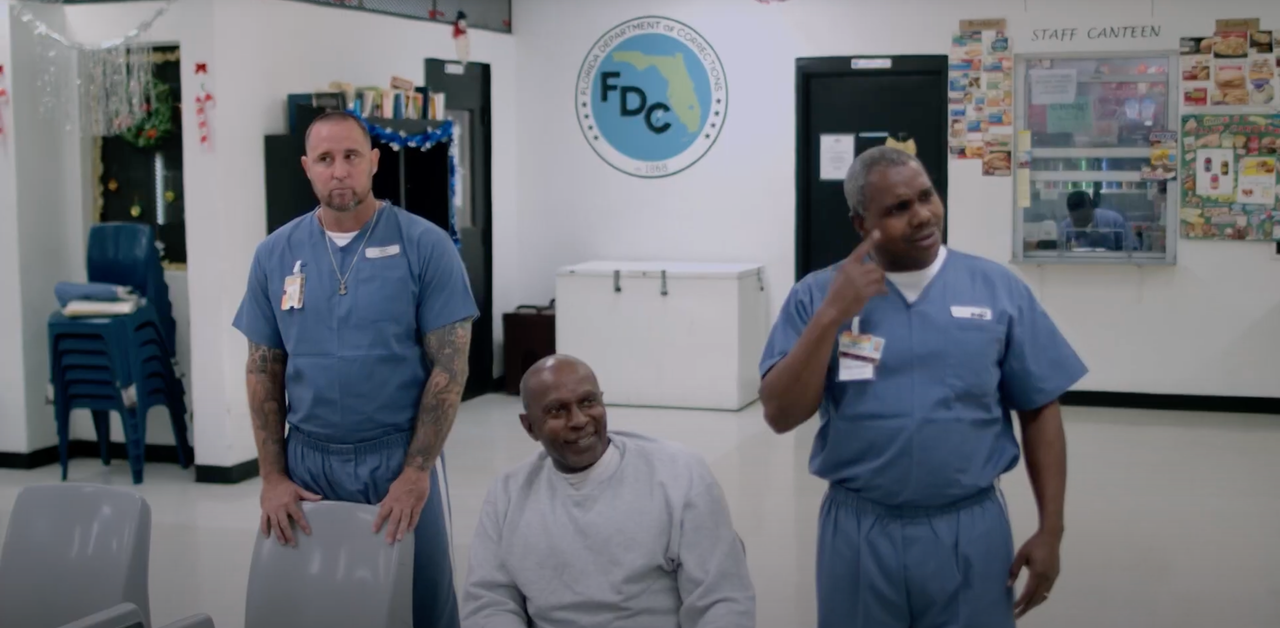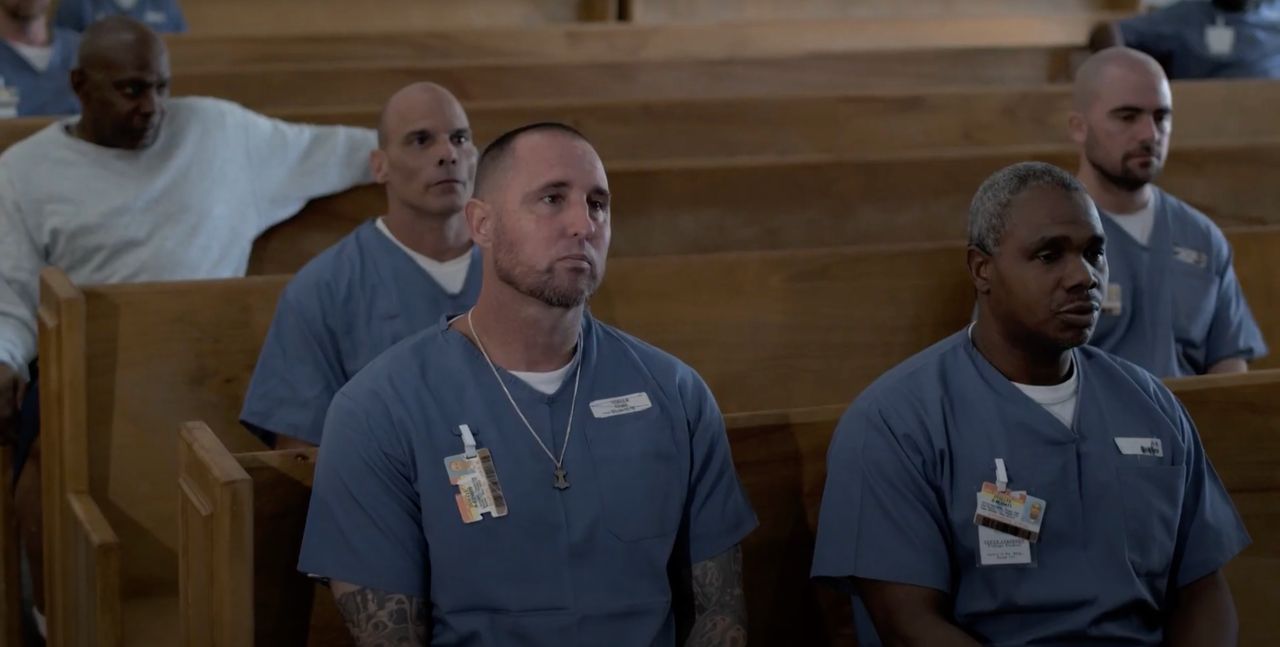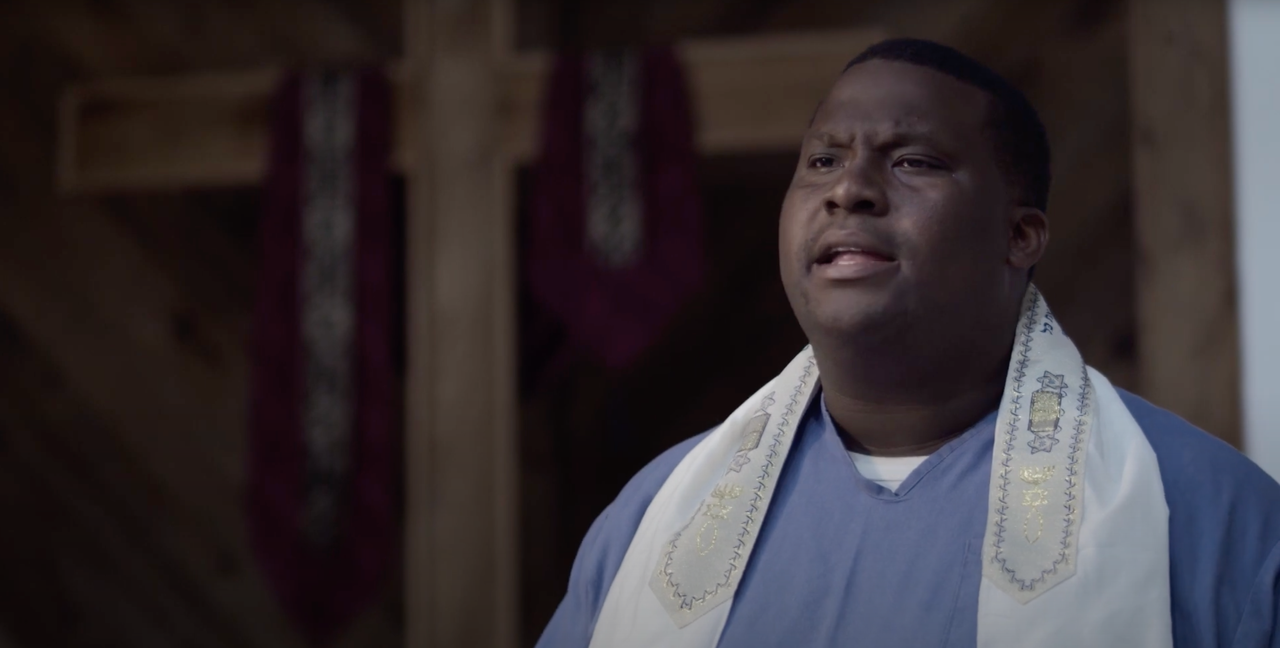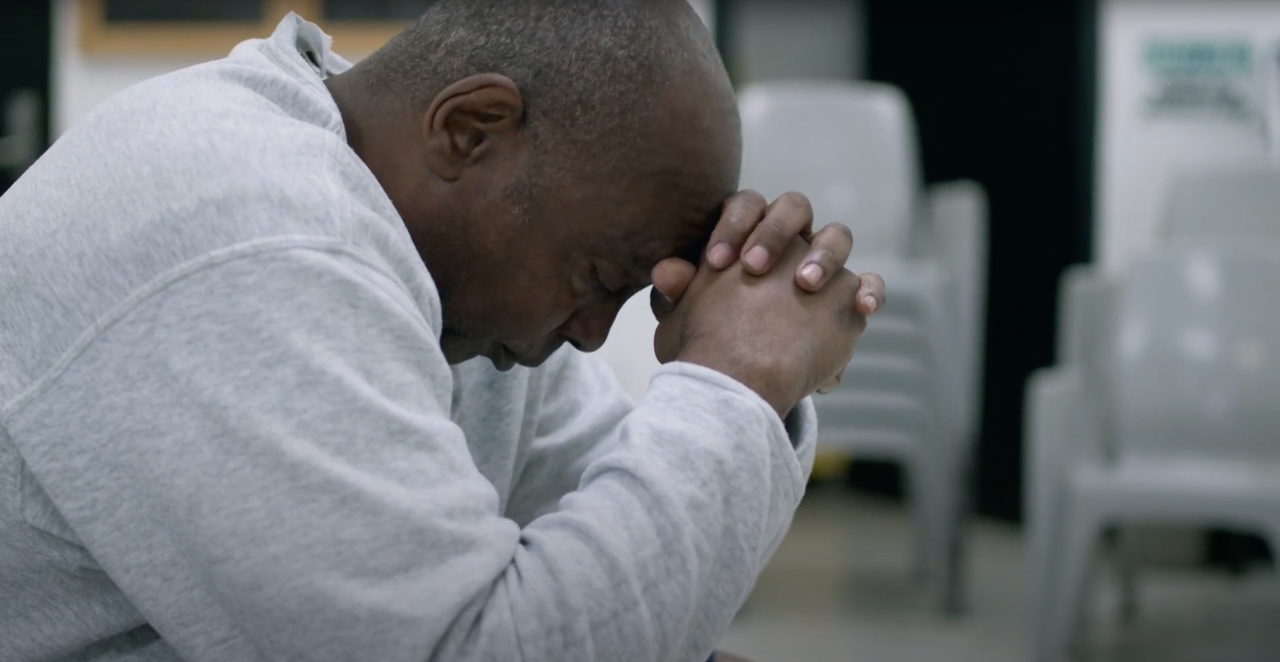[ad_1]
MIAMI ― Holding a movie slate and wearing the same prison blues he’d worn for the last 16 years, the assistant director waited patiently for the actors to stand on their assigned marks.
“Quiet on set! Scene one, take one. Roll cameras,” he said.
With the snap of the slate, Anthony Scrima, an incarcerated resident, kicked off filming for a groundbreaking production inside the Everglades Correctional Institution (ECI).
Director Larry Fordham Jr., 49, is due to be paroled next spring. He paused and looked around the room, where 20 men stood in eager anticipation. Then he yelled the magic word: “Action!”
In the winter of 2021, a class of incarcerated students pursuing associate degrees in arts at Miami Dade College (MDC), wrote and directed the nearly 14-minute short film “No Place Like Home” — an incredible feat considering the challenges of making a movie behind bars. With the exception of post-production at the MDC campus, every facet of the film was done by the students: writing, directing, acting, cameras, sound, lights and storyboard art. A couple of other movies have been made inside prison, but this might be the first to use incarcerated residents for nearly every part of the filmmaking process.

Professor Adrian Garcia, an assistant professor at the MDC School of Entertainment and Design Technology, led the project. He spent the first eight weeks of the semester teaching the fundamentals of screenplay writing, during which each of the students wrote a short script for consideration. The one he ultimately chose, by Fordham Jr., has a plot reminiscent of a reality faced inside: After four decades in prison, a man going home must confront his fears of leaving behind the family he made over the years.
“We weren’t making a quintessential prison movie,” Garcia said. “We wanted a good story that would show the humanity behind bars.”
With the script approved, each student was assigned a role in the filmmaking process, and the class began training with cameras, lighting and sound equipment. Retired gang members, ex-thieves and recovering addicts carefully passed lenses around the room. Students practiced holding the light reflector, while someone rapped Jay-Z lyrics into the mic boom for a sound check.
During the excitement of the last day of training, someone tripped over a tripod and the classroom went silent — before everyone started laughing.
Fade In: Interior Prison Chapel
Filming inside a correctional institution has its difficulties.
“Reserving empty space and staying on schedule was a recurring problem,” Garcia admitted, “but the prison administration was very supportive of the process.” Security concerns from the administration, however, forbid cameras from showing any fences, cells or secure areas. That meant the entire film had to be shot in the prison chapel and visitation center.
As the class walked into the chapel for the first day on set, Garcia pointed out the best locations for the cameras, and the crew got to work. Thomas Daugherty, a 32-year-old grip, moved the pulpit and replaced it with a fake coffin. A boom operator found a spot to lie on the floor behind a pew, while two cameramen set up on opposite sides of the room.
“There’s so much that goes on behind the scenes,” said Daugherty. “This experience will change the way I watch movies.”
When everyone was in place, Fordham Jr. instructed the actors on a last-minute script change and called “Action!” A small group of men sat on a chapel bench, paying their respects to an elderly acquaintance who had just died. “You served your time, and now you’re free, Old Dawg,” said lead actor Stanley Stovall, 64.

Soon enough, Fordham Jr. cut the scene and called out directions for another take. Garcia gave some subtle instructions to his class but mostly watched as, over the course of the day, the prison chapel morphed into a real movie set.
“For the first couple hours, I was doing too much,” Garcia said. “But the guys elbowed me out of the way and took charge.”
The group had just five days to complete the shoot, with only a couple hours to film each day. Work had to be scheduled around multiple time-consuming security counts, and the class had to be mindful about sharing the spaces with other programs. Setbacks were costly. On day three, production halted for three hours when the prison staff couldn’t find the SSD sound card that was kept in someone’s office overnight.
The final chapel scene was a quiet interaction showing Thomas March, 44, and a nervous Stovall talking about going home to an unfamiliar world. While the cameras rolled, Fordham Jr. positioned the actors with hand signals.
“Acting was harder than I thought,” said March, who is serving 30 years for a robbery. “My adrenaline was going, and I was trying to remember my lines while seeming natural. After six takes it started to feel like real work.”
He added that he found the scene especially resonant: Being released from prison after a long time is a real concern for a lot of guys.
The Bigger Picture
Miami Dade College has been offering programs at ECI for almost a decade, but it was only in 2020 that it was able to introduce credit-bearing courses, thanks to a Second Chance Pell grant from the U.S. Department of Education. The initiative is focused on helping incarcerated students work toward associate’s degrees and gain professional skills that could prove useful when they get out.
The film class, which was offered for the first time in 2021, may not seem like an obvious choice. And considering how many roadblocks educational programs meet in prison, the idea of making a short film inside seemed almost fantastical.
Garcia insisted, however, on its practical value. “Film is more of a trade than an art form,” he said. “We wanted to offer this class because the industry is progressive, and my students are gaining valuable skills that can get them a job when they’re released.”
That’s not the only reason for incarcerated students to study film. Changing the narrative about what prisoners can and can’t do was also important to the professor and his class. They want “No Place Like Home,” which is currently ready to be submitted to film festivals or shown on TV, to help transform the way society views incarcerated people — not as uneducated criminals, but as productive members of their communities. The team is working on a distribution plan for the film.

“My students are fast learners and very respectful. Every stereotype about prison couldn’t be further from the truth,” said Garcia, who added that he would be teaching the course again this fall. “They showed a lot of initiative.”
Fordham Jr. noted that there is so much talent inside that nobody ever gets to see. “One mission of this film was to raise awareness to what goes on behind bars,” he said. “If people realized how much creativity is here, they may see us differently.”
The Martini Shot
When the class walked into the visitation center on the last day of filming, nothing was in place. Without any prompting, the crew started moving desks and organizing the set, while the actors ran their lines. The grips helped the assistant directors find chairs, and the boom mic operator volunteered to find a prop bag.
The mood during rehearsals was bittersweet: The crew was ready to film the final scene, but everyone knew the ride was about to be over.
“Let’s have a lot of fun here today,” Garcia said.
As the cameras rolled, Stovall portrayed the man about to be released, waiting impatiently for an uncle who never arrives. As his prison family looks on with pity, a stranger comes to his rescue and walks him outside to freedom for the first time in 40 years.

Then someone forgot their lines.
After the scene was finally finished, the room exploded in applause. Students shook hands with their professor and laughed about a future blooper reel.
In the beginning of the semester, lighting assistant Melvin Brinson, 67, had no idea what Film 101 would be like, but it turned out to be his favorite class. “I’ve been locked up a long time, and I finally felt like I was a part of something that mattered,” he said.
While the grips packed up all the delicate equipment in padded boxes, Garcia unplugged the portable hard drive from the digital camera and stored it in his pocket for safekeeping, ending his unique four-month experience on a high note.
“We need to reward good behavior with a second chance,” said Garcia. “It makes it so much easier for people to make it in society. I’m really proud of the students and their work.”
As everyone stood around at the wrap party, telling stories about their favorite moments, I asked Brinson to describe the best part of his lighting job.
He looked at me with the glassy eyes of a man who’s been condemned to life in prison. “When I shined the light on the actors, it was like they became the star,” Brinson said. “For once we were special. That’s a pretty nice feeling for guys like us.”
[ad_2]
Source link
